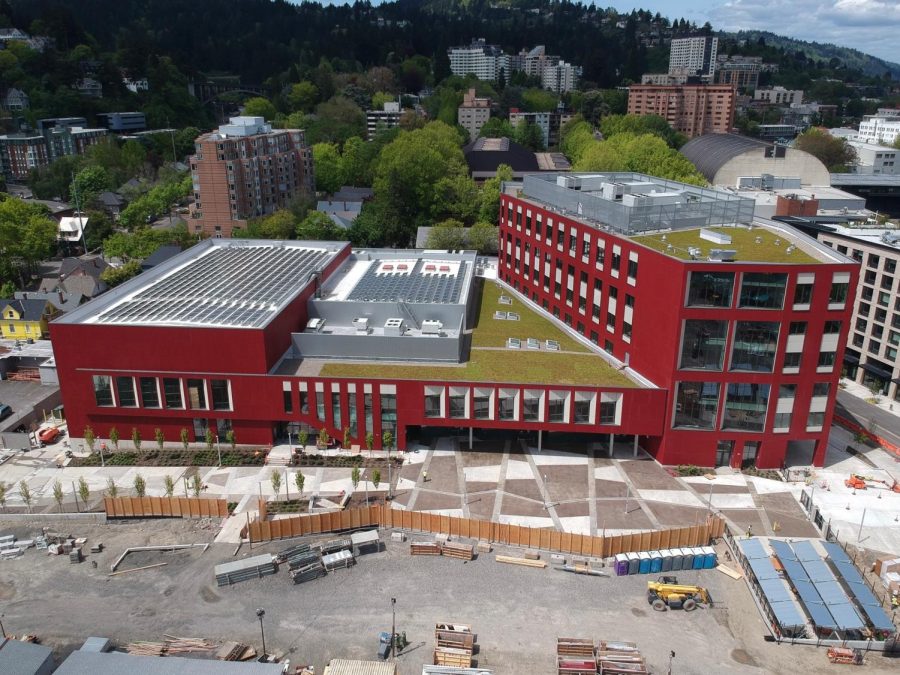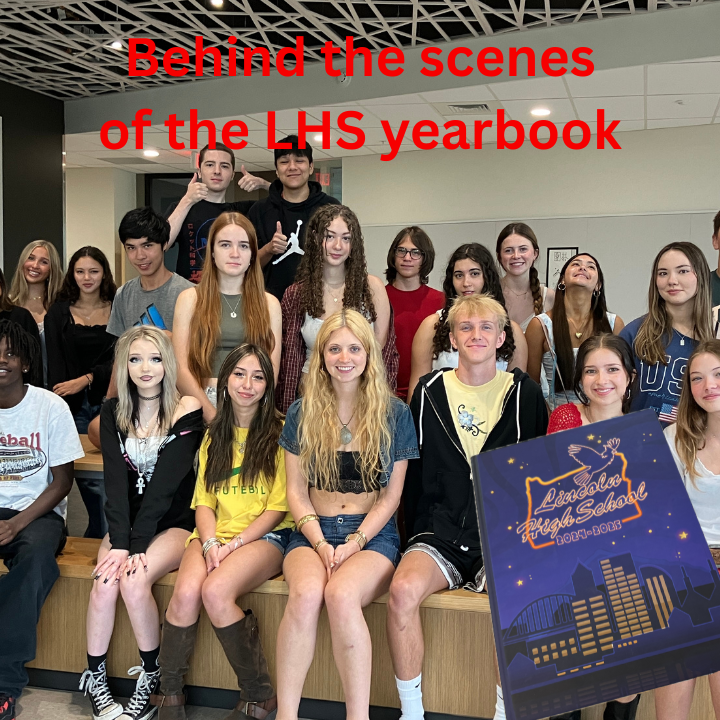New building prioritizes sustainability
Solar panels and a green roof are some of the new sustainability and resiliency features that have been implemented in the new building.
September 17, 2022
Including sustainability and resiliency features in the new school was a priority for the district. One major feature is the new solar panels.
“There are solar panels located on the roofs of the auditorium and gym,” said Vice Principal Chris Brida. “And on any given day, the solar panels power somewhere between 30-35% of our daily power usage.”
The green roof is another major sustainability feature. Green roofs are located on the roofs of the tower and second floor.
“One of the cool things about the green roof is we were able to have a little bit more parking and not as many trees because we had enough [plants] on the green roof,” said Jill Ross, Lincoln’s business manager.
According to Brida, Lincoln will function as the Westside command center in case of a major emergency. The building also has two backup power generators that will power emergency systems.
“There’s one generator that’s the emergency backup generator and if we were to lose power there’s a second generator that will pull all the power that we’re making from our solar panels so that we can have more power during an outage,” said Ross. “Basically, we’ll be making our own power to power more things.”
According to Ross, the school is also currently planning on applying for Gold LEED certification, a widely used green building rating system. She said there are more green features to come.
“So in phase two, when athletic fields are built, and the old building is gone, there is going to be something like 140 new trees on campus,” said Brida. “There’s also going to potentially be some garden space on the far end of the facility closest to 14th Street.”
Chemistry teacher Nathan Watson has some reservations about the new building’s sustainability capabilities.
“We need to be thinking about the future, we need to be building these new schools to imagine that they would be good places for learning in 50 years or 100 years, not just this year. And I think that’s part of that strategy,” said Watson. “Sometimes I worry that there’s too much of an aesthetic component to the modernized protocol, and not enough of a functional component. Like the large windows, for example. I do love the large windows, the energy flowing through them is not always regulated as well. ”
There is, however, still a lot of optimism surrounding the new features.
“In a giant building, like this, being able to power at least some of it out of solar with the potential for more if that were a route the district wanted to take is a really good sort of initiative,” said Brida. “It’s a step in the right direction for the planet.”




